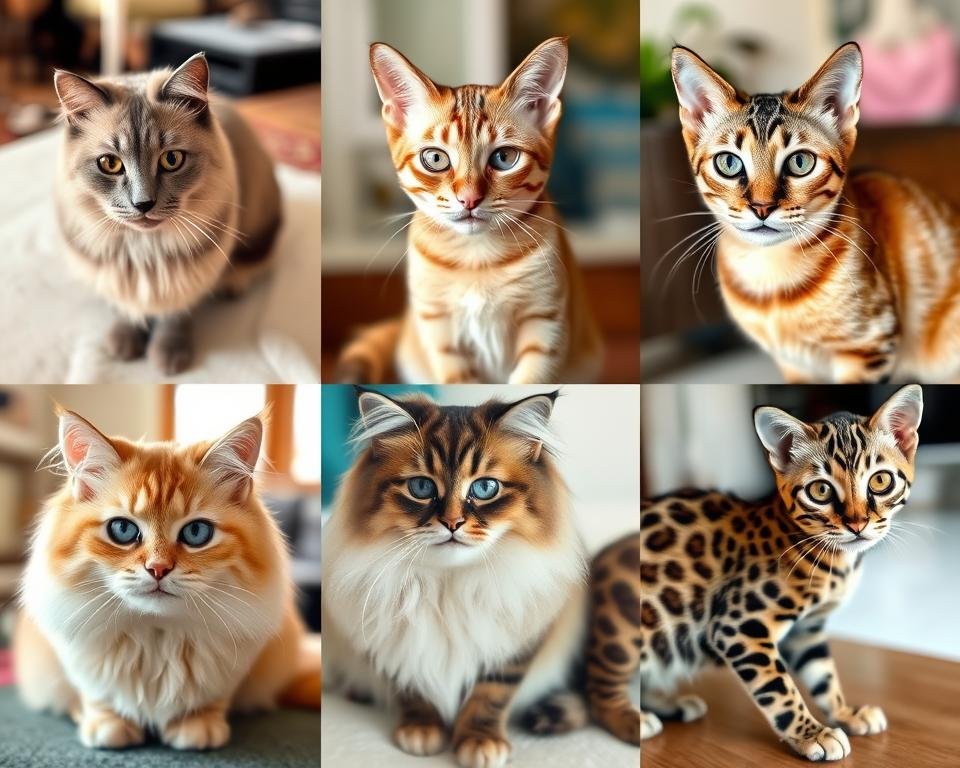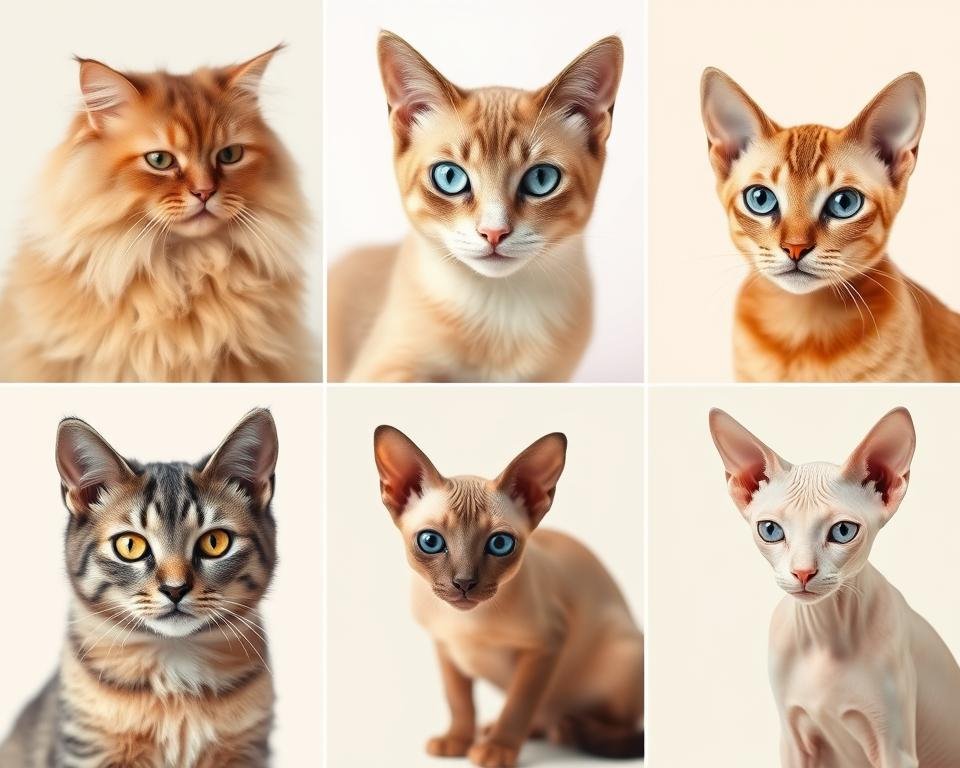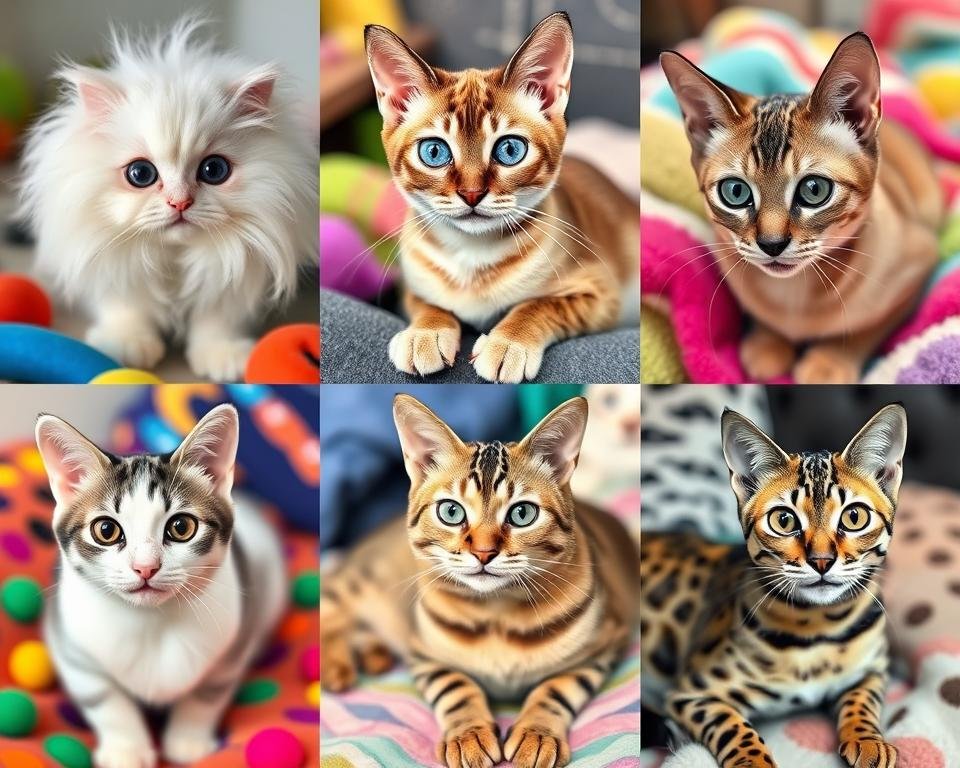There are over 70 officially recognized cat breeds. Figuring out your cat’s breed can be a fun challenge. It can also give you insights into its personality, health, and special care needs.
But how do you start with cat breed identification? Get ready to explore the exciting world of feline breed recognition.
Understanding Cat Breed Identification Basics
Finding out a cat’s breed is more than just fun. It can tell you about their family history, health, and how they act. Many cat owners see their pets as part of the family. They love to learn about their cat’s background. But, there are some myths about cat breeds that need to be cleared up.
Why Breed Identification Matters
Knowing a cat’s breed helps owners meet their needs. Some breeds get sick more often, so knowing this can help prevent or catch problems early. It also helps understand their personality and how active they are. This way, owners can give them the best life and friendship.
The Difference Between Purebred and Mixed Breed Cats
Purebred cats come from planned breeding and often have papers to prove it. Mixed breeds are more common and have a mix of genes. Many think mixed breeds are healthier, but that’s not always true. Purebred cats have special genes that can also show up in mixed breeds, in different ways.
Most cats are not purebred. In France, for example, only about 2,500 Russian Blue kittens are registered each year. This means most cats are domestic and not part of a specific breed.

Common Misconceptions About Cat Breeds
Some people think cat breeds are as different as dog breeds. But, cat breeds are not as varied. Mislabeling a cat’s breed can spread wrong information and help bad breeders. Companies like Basepaws can’t always say for sure what breed a cat is because the science is not fully developed.
Learning about cat breeds helps owners understand and care for their pets better. It’s a way to appreciate their unique qualities and make sure they’re happy and healthy.
Physical Characteristics That Define Cat Breeds
Figuring out a cat’s breed is exciting, as they come in many shapes and sizes. From the big Maine Coon to the lively Siamese, each breed has special physical traits that make them unique. Let’s explore the main features that help spot different cat breeds.
Size and weight are key in telling a cat’s breed. Cats can be big (over 15 pounds), medium (9-12 pounds), or small (under 9 pounds). Most cats weigh about 11 pounds, but some can be almost 20 pounds, and others are much smaller.
Facial features are also important in figuring out a cat’s breed. Some cats have round faces, while others have long, narrow heads. Ear shape, from curled to tufted, is another clue.
- Coat length, texture, and patterns are also key. Cats can have short, medium, or long hair. Some even have curly or no hair at all.
- Eye color and shape can also tell a cat’s breed. Siamese and Balinese cats often have blue eyes. Other cats have green, yellow, or other eye colors.
By looking at these physical traits, cat owners can how can i tell what type of cat i have. They can learn more about their cat’s cat breed traits. Knowing about different breeds helps pet owners understand their cat’s story.

“Cats come in a remarkable array of shapes, sizes, and physical attributes, each breed defined by its own unique set of characteristics.”
What Breed Is My Cat – Essential Features to Check
Figuring out your cat’s breed is an exciting adventure. By looking at their physical traits, you can guess their background. These traits, from face shape to coat type, are key clues in the cat breed identification guide.
Face Shape and Structure
Cats have different face shapes. Some have round faces, while others are flatter. The muzzle shape and eye placement also tell you about their breed.
Coat Types and Patterns
Cats have many coat types, like the Persian’s long fur or the Siamese’s short coat. Their coat patterns can be solid, tabby, spotted, or even nearly bald like the Sphynx.
Body Size and Build
A cat’s size and build can hint at their breed. For example, Maine Coons are big and muscular, while Siamese are smaller and slender.
Ear and Eye Characteristics
A cat’s ears and eyes can also give away their breed. Scottish Folds have folded ears, and Siamese have striking blue eyes.
By noticing these features, you can learn more about your cat’s breed. This helps you understand their unique traits and characteristics.
“Discovering the breed of your cat can be a fun and rewarding experience. It’s like solving a puzzle, and the pieces are in the details of their physical appearance.”
Popular Cat Breed Categories and Their Traits
Exploring the world of cats reveals many breed categories with unique traits. From the Maine Coon to the Siamese, each breed has its own personality and looks.
Large breeds like the Maine Coon, Norwegian Forest Cat, and Ragdoll can weigh up to 25 pounds. These cats are big, gentle, and love people. Medium breeds, such as the American Shorthair, Siamese, and Persian, weigh 8 to 15 pounds. They have different personalities, from outgoing to reserved.
For those who like smaller cats, the Munchkin and Singapura are great. They weigh less than 10 pounds and are full of energy.
Some cats stand out because of their looks. The Persian and Exotic Shorthair have flat faces. The Siamese and Cornish Rex have narrow faces. The Scottish Fold and American Curl are known for their ears.
Whether you want a Maine Coon, a Persian, or a Munchkin, knowing about different breeds helps. It makes finding the right cat for you easier.
“Cats are the ultimate self-contained – they are born with the knowledge that they can take care of themselves.” – Jane Pauley
Behavioral Traits That Help Identify Cat Breeds
Behavioral traits can give clues about a cat’s breed. For example, Burmese cats love to play fetch. Ragdolls are known for being very calm and loving when held. Bengals, on the other hand, are full of energy and life.
Some breeds may face health issues that affect their behavior. Bengals can get kidney disease, and Maine Coons might have heart problems. But, mixed-breed cats can have their own special personalities that don’t always match breed traits.
Personality Indicators
Cat breeds have unique personalities. Siamese cats are outgoing and talkative. Persians, on the other hand, are calm and gentle. These traits can hint at a cat’s breed background.
Activity Levels and Energy
A cat’s energy level can tell you about its breed. Ragdolls are very relaxed, while Bengals are full of energy and life.
Social Behaviors and Temperament
A cat’s social behavior and temperament can also reveal its breed. Persians are very calm and rarely aggressive. Siamese cats, though, can be sensitive and may groom too much due to stress.



